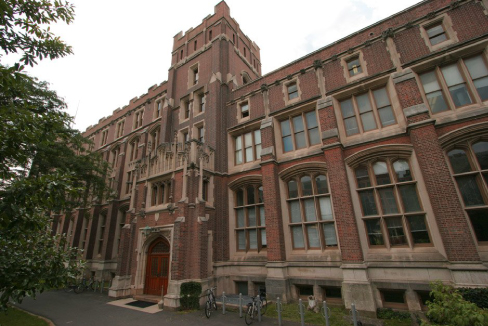Principal Investigators
At a Glance
Hydrogen (H2) energy will play a crucial role in decarbonizing some energy sectors to reach worldwide net-zero carbon emissions. However, atmospheric hydrogen interferes with greenhouse gases like methane, water vapor and ozone. This means that hydrogen losses across the supply chain may offset some of the climate benefits of hydrogen adoption. Hydrogen’s interaction with atmospheric methane, the second most important greenhouse gas, is of particular importance because methane mitigation is recognized as the most effective solution for near-term climate change mitigation. The research explored the impact of hydrogen emissions on atmospheric methane, quantifying a critical hydrogen emission rate (HEI) above which methane increases despite reducing fossil fuel use. This information will help inform bp about the importance of minimizing hydrogen losses to limit hydrogen climate impact.
Research Highlight
The use of H2 will be essential toward decarbonizing the energy and transport sectors where direct electrification may not be feasible, like heavy industry, heavy-duty road transport, shipping and aviation. H2 fuel also offers a promising solution to reduce air pollution and store intermittent renewable energy. However, the impact of future hydrogen losses due to leakages, venting, purging and incomplete combustion are not clearly understood and may complicate hydrogen’s future role.
H2 is neither a pollutant nor a direct greenhouse gas. It is, however, an indirect greenhouse gas because it interferes with methane, water vapor and ozone in the atmosphere. Most recent evaluations give H2 a global warming potential of around 10 for a 100-year time horizon and about 35 for a 20-year time horizon (Warwick et al., 2022) demonstrating that the potential climate impact of H2 emissions is significant. The feedback of hydrogen on atmospheric methane is particularly important to climate change. Methane has been the second largest contributor to atmospheric warming since the beginning of the industrial era, and there are global efforts to mitigate its atmospheric level.
Porporato’s group has been addressing this problem by developing a box model for the coupled atmospheric system of methane and hydrogen (Bertagni et al., 2022). The hydrogen and methane budgets are deeply interconnected for several natural and anthropogenic reasons (Figure 8.1). First, both gases are removed by the radical hydroxide (OH), the ‘atmosphere detergent’. An increase in the concentration of tropospheric H2 would reduce the availability of OH for methane oxidation. This, in turn, would increase the amount of atmospheric methane. Second, methane oxidation leads to hydrogen formation. Third, hydrogen and methane are linked at the industrial level because most of the current and nearterm future H2 production comes from steam methane reforming.

Sketch of H2 and CH4 tropospheric budgets and their interconnections:
1) the competition for hydroxide (OH);
2) the production of H2 from CH4 oxidation; and
3) the potential emissions [minimum-maximum] due to a more hydrogen-based energy system. Flux estimates (Tg/year) are from Ehhalt et al. (2009) and Saunois et al. (2020). Arrows are scaled with mass flux intensity, the CH4 scale being 10 times
The critical hydrogen emission intensity is a benchmark that can be used to evaluate the impact of hydrogen use, which can be beneficial or detrimental, on atmospheric methane. Clearly, this requires detailed estimates of future hydrogen emissions.

Critical hydrogen emission intensity (HEI) of green and blue H2 (with 0.2, 0.5, 1% CH4 leak rates) as a function of the OH excess, i.e., the amount of OH that reacts with other gases besides methane. Triangles mark the critical HEI for the best estimates. Dashed (dotted) lines are obtained for a 20% increase (decrease) in the H2 uptake rate by soil bacteria.
References
Bertagni, M. B., S.W. Pacala, F. Paulot, and A. Porporato, 2022. Risk of the hydrogen economy for atmospheric methane. Nature communications 13(1):7706. (https://doi.org/10.1038/s41467-022-35419-7).
Ehhalt, D. and F. Rohrer, 2009. The tropospheric cycle of H2 : a critical review. Tellus B: Chemical and Physical Meteorology 61(3):500–535. (https://doi.org/10.1111/j.1600-0889.2009.00416.x).
Saunois, M. et al., 2020. The global methane budget 2000–2017. Earth System Science Data 12(3):1561-1623. (https://doi.org/10.5194/essd-12-1561-2020).
Warwick, N. et al., 2022. Atmospheric Implications of Increased Hydrogen Use. Technical Report (Policy Paper from UK’s Department for Energy Security and Net Zero and Department for Business, Energy & Industrial Strategy). (www. gov.uk/government/publications/atmospheric-implications-ofincreased-hydrogen-use).







